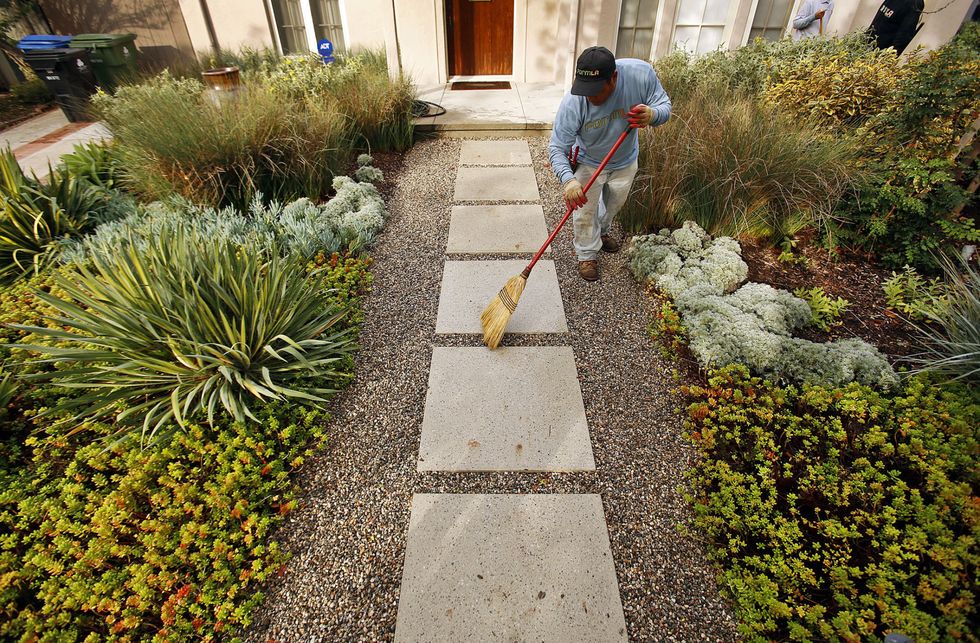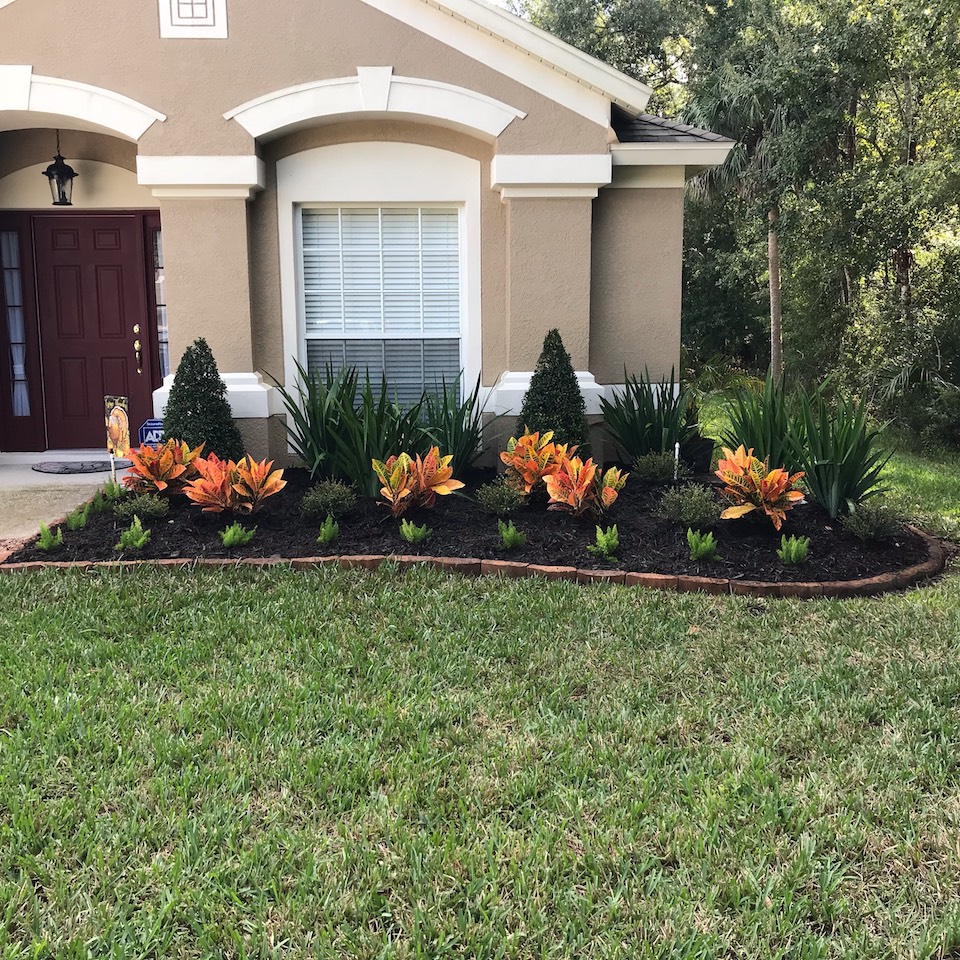Why Picking the Right Palm Desert Landscaping Service Issues
Why Picking the Right Palm Desert Landscaping Service Issues
Blog Article
A Comprehensive Guide to Designing and Implementing Effective Landscape Design Solutions
The art and scientific research of landscaping prolong past plain appearances; they include a thoughtful assimilation of layout principles, ecological stewardship, and useful implementation. What techniques can one utilize to make certain these landscapes not just prosper however likewise thrive in consistency with their surroundings?

Comprehending Landscape Design Principles
One may question what foundational aspects add to reliable landscape style. At its core, effective landscape layout depends upon a number of crucial concepts that assist the setup and choice of components within an area. These concepts consist of unity, proportion, rhythm, and balance, each serving to develop a harmonious outside environment.
Unity describes the cohesive relationship among different elements, guaranteeing that they collaborate aesthetically and functionally. Balance can be attained via unbalanced or balanced setups, enabling the landscape to really feel secure and welcoming. Percentage includes recognizing the range of aspects in regard to each other and the surrounding setting, advertising aesthetic consistency and convenience.

Assessing Your Outdoor Space
Prior to executing the concepts of landscape design, a complete assessment of your outdoor room is crucial. This first assessment aids specify the extent of your landscaping job and makes sure that your design aligns with the unique characteristics of your home. Begin by assessing the measurements of your room, taking precise measurements to understand the available location for various components such as paths, outdoor patios, and yards.
Following, observe the existing attributes of your landscape, including topography, soil quality, and drainage patterns. These factors considerably influence plant selection and placement. In addition, evaluate the sunlight exposure across different areas throughout the day, as this will influence the sorts of plants that grow in your garden.
Take into consideration the microclimates developed by structures, trees, and other obstacles, as they can influence temperature and moisture levels. Finally, take note of any kind of existing plants or hardscape aspects that you desire to get rid of or keep. This comprehensive assessment lays the foundation for a well-informed and reliable landscaping option, ensuring that your design is not only aesthetically pleasing yet also practical and lasting for many years ahead.
Lasting Landscape Design Techniques
These techniques not only advertise environmental equilibrium yet additionally boost the practical and aesthetic worth of a landscape. Executing reliable watering systems, such as drip watering, decreases water waste and guarantees that plants obtain ample wetness (Palm Desert Landscaping).

Another reliable technique is the tactical placement of bushes and trees to supply all-natural windbreaks and color, thus lowering energy prices (Palm Desert Landscaping). Rainfall gardens can be incorporated right into the landscape style to take care of stormwater drainage successfully, filtering system pollutants before they enter waterways
Picking the Right Plant Kingdoms
Selecting the right plants for your landscape is essential to attaining both visual charm read here and environmental consistency. The process starts with an understanding of your local environment, dirt conditions, and the details microenvironments within your landscape. Evaluating aspects such as sunshine direct exposure, dampness degrees, and existing flora will help you select plants that thrive in your special setting.
Consider including indigenous plants, as they are well-adapted to regional conditions, call for much less maintenance, and support regional wildlife. Furthermore, picking a varied array of species can enhance biodiversity while lowering the risk of disease and insect episodes. It is vital to evaluate the development behaviors, growing periods, and seasonal colors of prospective plants to create a cohesive and dynamic landscape.
In addition, think of the planned use the room; for instance, if the area will experience high foot web traffic, choose resilient ground covers. By thoughtfully picking plants that line up with both your environmental requirements and aesthetic objectives, you can develop a lasting landscape that not only boosts your home but likewise contributes positively to the bordering community.

Execution and Upkeep Strategies
As soon as the ideal plants have actually been picked for your landscape, the focus moves to reliable execution and continuous maintenance approaches. Successful installment begins with correct site preparation, that includes dirt testing to figure out nutrient degrees and pH, followed by amending the dirt as needed. Thoroughly set up plants according to their growth habits and light needs, ensuring sufficient spacing to advertise healthy development.
Irrigation is a vital component of application. Establish a watering schedule that thinks about the specific demands of each plant varieties, adjusting for seasonal changes. Utilizing drip watering systems can boost water performance and Bonuses decrease drainage.
Maintenance approaches need to be carried out to guarantee the longevity and vitality of your landscape. Normal jobs consist of weeding, mulching, and pruning to manage development and prevent illness. Fertilization must be conducted based upon soil tests, offering the needed nutrients without over-fertilizing.
Keeping an eye on for diseases and bugs is essential; early discovery can prevent significant damage. Last but not least, seasonal modifications to upkeep routines, such as winterizing perennials and preparing for spring growth, will certainly ensure that your landscape continues to be healthy and look at this website visually enticing year-round.
Conclusion
Effective implementation and continuous upkeep better ensure the longevity and vitality of landscapes. By integrating these components, landscapes can be changed into attractive, useful atmospheres that advertise biodiversity and add favorably to area wellness.
One might wonder what fundamental elements contribute to reliable landscape style. At its core, successful landscape design pivots on a number of key principles that lead the setup and option of elements within a space.Selecting the right plants for your landscape is crucial to achieving both visual charm and ecological consistency. It is necessary to evaluate the development habits, blooming periods, and seasonal colors of prospective plants to produce a dynamic and cohesive landscape.
As soon as the appropriate plants have been selected for your landscape, the focus changes to effective application and ongoing maintenance approaches.
Report this page